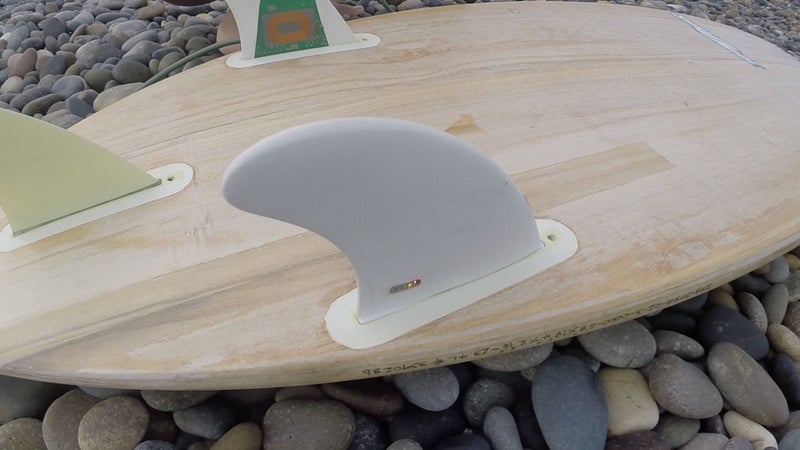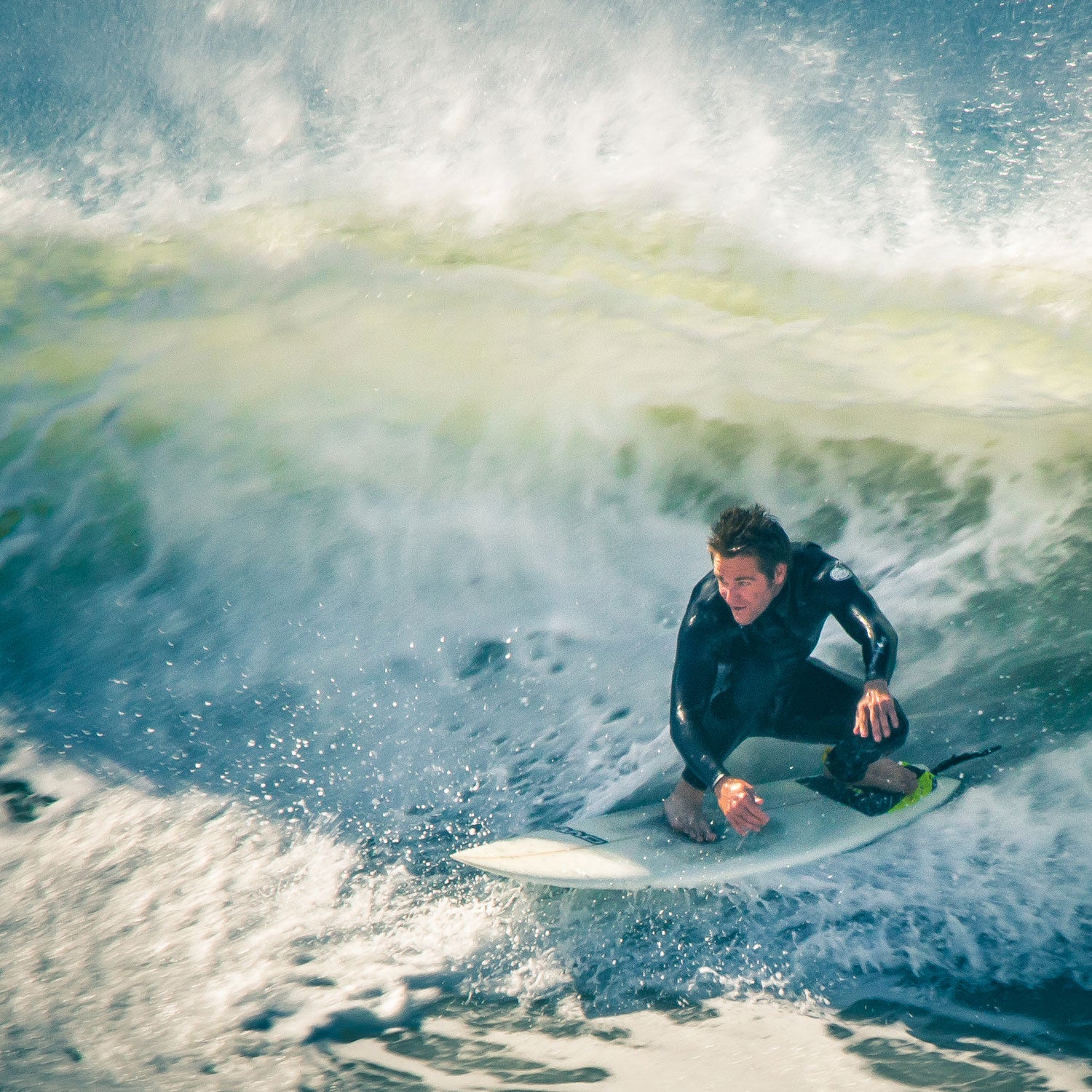As the Internet of Things inches its way into every corner of our lives, no one would blame you for rolling your eyes at the suggestion that even a surfboard should be embedded with sensors and smartphone connectivity.
Don't. That surfboard is real. And it's helping scientists better understand the impact climate change is having on our oceans.
In 2010, , a former professor of neurology at the University of Rochester who's now an environmental filmmaker and advocate, realized that surfers could serve as citizen scientists. Simply based on how much time they spend in the ocean, they could help collect data while on the water.
One of his filmmaker friends had recently met Benjamin Thompson, a surfer pursuing a PhD in structural engineering at the University of California, San Diego. Thompson was studying fluid-structure interactions, research that involved embedding sensors into boards. “It was mostly about tracking the performance of board,” he says. Thompson's goal: to help the surfboard industry make better boards, and maybe use sensors to help surfers better understand (and improve) how they surf.
Thompson built extra technology into Smartphin that will compel surfers to use it for selfish reasons: To know where and when waves are good and to track surfing performance.
But after meeting Stern, Thompson realized he could use sensors as mini data loggers, collecting information about water chemistry as well as wave mechanics. He'd embed the electronics into a surfboard's fin. Thus the project, named , was born.
“My intention with this was to use it as a tool to inform people about the environment and specifically the oceans,” says Stern, who provided a home for Smartphin at the , his environmental filmmaking organization. “So I made a map with 17 surf spots around the world and said we'll deploy to these places as many sensors as the scientists say we'll need there [to collect] data.”

Their original intent was to embed sensors to track water temperature, salinity (conductivity), and acidity, an important metric for climate scientists. Oceans have absorbed about a third of the carbon dioxide we've emitted since the dawn of the industrial age, making them around 25 percent more acidic than they were then. That lower pH (higher acidity) impedes the growth of calcium carbonate and is already harming shellfish fisheries and coral reefs. “But pH is hard to track, so we tackled temperature and conductivity first, and then planned on adding a pH sensor later,” Stern explains.
Earlier this year, the team competed in a $2 million competition hosted by the to inspire innovation of accurate, durable, and affordable pH sensors to help scientists better track and study ocean acidification. They suddenly found themselves not only in the running for the top prize but also in the company of a gaggle of climate scientists and technologists who could help Thompson design a pH sensor for the fin. Smartphin even made it all the way to the semi-finals, where it competed against teams of scientists from universities and research centers all over the world, before being eliminated before the final round.
Stern and Thompson are now looking for a way to get the Smartphin into surfers' quivers.
Though no formal agreements have been made, Intel is interested in joining the project to provide its chip and sensor acumen to the effort. And starting in November, the first Smartphin pilot project will begin, with 50 scientists and researchers from the screwing Smartphin prototypes into their boards and taking to the waters outside their workplace.

The scientists will compare the data—on water temperature, salinity, and acidity—that they collect from the Smartphins with data collected from the same types of sensors affixed to a pier, Stern explains.
Of course, to better understand acidification along coastlines, scientists need to collect as much data in as many places as possible. And that raises the question: How do you get millions of surfers to swap out their fins for Smartphins? And why would they buy a Smartphin if, say, a nonprofit couldn't cover the costs?
Thompson says he's built some extra technology into Smartphin that will compel surfers to use it for their own selfish reasons: To know where and when waves are good and to track their own surfing performance.
Motion sensors integrated into the fin will generate high-resolution tracking data that a smartphone app, which the fin communicates with via Bluetooth, will turn into reports similar to those surfers get, Thompson asserts. Here's the real kicker: the fins will also collect wave characterization data, or what he calls wave signatures.
“In Southern California, from Point Conception to Tijuana, there are probably a dozen buoys in the water that characterize waves,” says Thompson. These basically size the wave potential, based on the swells, and project that all the way to the shore. “And then Surfline says, 'This is what we think the waves are doing,'” he says.
But by culling data from sensors that are actually inside the waves and all around a break, Smartphin can generate a more accurate signature for the waves at any given time that people are surfing, says Thompson.
“A lot happens between the deep water and the break zone. You can use models to predict it but you don’t have the best [granularity],” he says, “We'll remove that by recording what is actually happening.”


